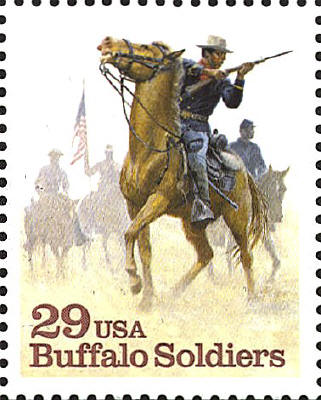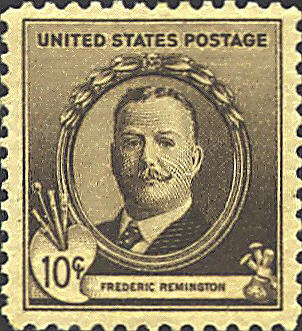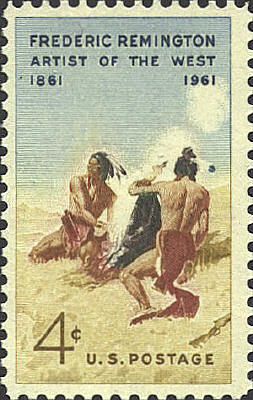|
Buffalo Soldiers
In 1866 two cavalry
regiments, the 9th and 10th, and two infantry regiments, the 24th and
25th, made up of black soldiers, were created. In 1867 they were sent
west to fight Indians, to protect settlers, cattle herds, and railroad
crews, and generally to keep the peace in what was called Indian
country.
The Cheyenne gave them the name "Buffalo Soldiers" probably
because of their short, dark, curly hair, like the mane of the buffalo.
The buffalo was a sacred animal and a focus of power for the plains
Indians, so the title was probably a sign of respect.
On November 20 Troops D, E, I, and K of
the 9th Cavalry under the command of General John R. Brooke arrived at Pine Ridge
in South Dakota. They did not participate in
the battle at Wounded Knee, but they were instrumental in
maintaining the peace following that action. William Othello Wilson,
of Troop K received the Medal of Honor because of his actions on
December 30, 1890 at Wounded Knee.
The Buffalo Soldiers left South Dakota after General
Miles' grand review of his troops on January 21, 1890. This was their last campaign on the
frontier. In the 1950's the Buffalo Soldier regiments were
disbanded when all military units were integrated.

Frederic Remington

Frederic Remington was a war correspondent
for Harper's Weekly, and was part of General Miles'
headquarters in November 1890. He did not witness the massacre at
Wounded Knee, but was intimidated by a small group of Dakota warriors
as he returned to Pine Ridge. His identification with the Indians and
his hope for a just relationship between Indians and non-Indians
were dashed
In 1959 a stamp was issued which showed a portion of
his oil painting, "Smoke Signal." Although the Indians in the picture
are Crow and not Dakota, the painting shows Remington's empathy with
the Indians. The painting was made in 1908 and is preserved in the
Amon Garter Museum, Ft. Worth, Texas.



 |
